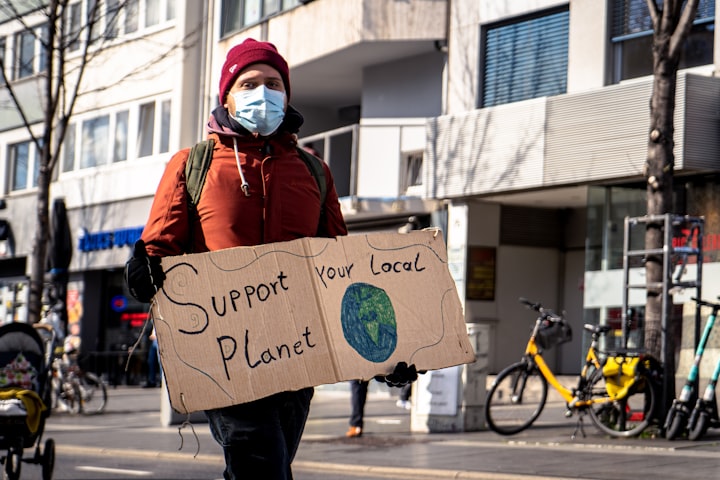Children and Future Generations:
Paint a poignant picture of the world future generations are inheriting. Highlight the emotional burden on children who grapple with the consequences of decisions made by previous generations, emphasizing their fears and hopes for the future.

In the twilight of a fading day, young eyes gazed out upon a world that bore the scars of decisions made long before the children were even born. The once-vibrant hues of nature now painted a muted tapestry of environmental degradation. Trees, once towering and proud, stood as mere whispers of the ancient sentinels they used to be. Rivers, once teeming with life, flowed sluggishly, carrying the weight of pollution and neglect.
In this world, children carried a burden not of their making but one that rested squarely on their small shoulders. Mia, a ten-year-old with a heart full of curiosity and a mind brimming with questions, looked at the world through a lens of both wonder and worry. The air she breathed held not only the scent of blooming flowers but also the undertones of industrial emissions that lingered like an unwelcome guest.
Mia's school, a place where young minds were supposed to blossom, felt like a battleground of conflicting emotions. The lessons spoke of ecological balance, of the delicate dance between species and ecosystems, and of the responsibilities humanity held towards the Earth. But the reality outside the classroom windows told a different story — a story of melting ice caps, disappearing species, and a climate teetering on the edge of chaos.
As Mia and her classmates engaged in conversations about the future, a heaviness settled over them, a collective awareness of the challenges they would inherit. The emotional burden on these children was palpable — a mixture of fear and determination that mirrored the fragile state of the planet they called home.
In the hushed whispers of the school corridors, Mia overheard snippets of conversations among her peers. Some spoke of their dreams for the future — a future where clean energy prevailed, where forests flourished, and where the air was pure and sweet. Others, however, voiced fears that echoed the uncertainty of the times. Would they have enough water to drink? Would the polar bears disappear from the frozen landscapes forever? Would the world they knew crumble beneath the weight of environmental crises?
In the evenings, Mia often sat on her porch, watching the sun dip below the horizon. The colors that painted the sky held a certain melancholy, a reflection of the bittersweet reality she was coming to understand. The decisions made by generations before hers had shaped a world where the balance was tipping, and the consequences were etched into the very fabric of existence.
Her grandmother, a wise woman who had witnessed the gradual transformation of the landscape, noticed the contemplative expression on Mia's face. As Mia shared her concerns about the future, her grandmother listened with a knowing gaze. "Child," she said, "you carry the hopes and dreams of tomorrow in your heart. Let that be your guiding light."
The emotional burden on Mia was not just a personal struggle but a shared experience among children worldwide. Across continents, in bustling cities and remote villages, children grappled with the consequences of decisions made by previous generations. The weight of inherited challenges manifested in the form of anxiety, eco-grief, and a sense of urgency that surpassed their tender years.
In schoolyards and community gatherings, young voices raised questions that echoed the fears and hopes of a generation navigating an uncertain path. The emotional burden was not confined to textbooks and classrooms; it was embedded in the fabric of their play, their friendships, and their dreams for the future.
In this poignant landscape, Mia and her friends became unintentional activists. Armed not with protest signs but with an innate understanding of the interconnectedness of all living things, they embarked on a journey to make a difference. Planting trees in the neighborhood, organizing clean-up initiatives, and advocating for sustainable practices, these children became the architects of their own hopes.
Their actions were not fueled by anger but by a deep-seated love for the world they wished to preserve. The emotional burden they carried became a catalyst for positive change, a force that propelled them to envision a future where the mistakes of the past were learned from, not repeated.
As Mia and her friends looked towards the horizon, a spark of resilience lit up their eyes. The emotional burden they carried was transformed into a driving force, a commitment to shaping a world where the legacy they left behind would be one of restoration, renewal, and responsibility.
In the quiet moments before bedtime, Mia would sometimes share her thoughts with the stars above. She wondered if those distant celestial bodies, too, witnessed the struggles of their planetary counterparts. And in the silent communion between a young girl and the universe, a promise lingered — a promise to honor the Earth, to protect its fragile beauty, and to pass on a legacy that spoke of resilience, hope, and the enduring spirit of the children who carried the weight of the world on their shoulders.





Comments
There are no comments for this story
Be the first to respond and start the conversation.